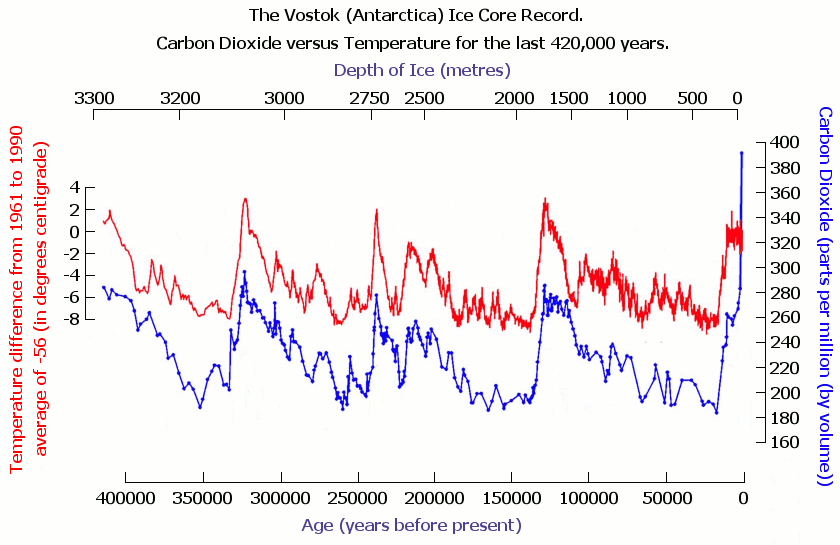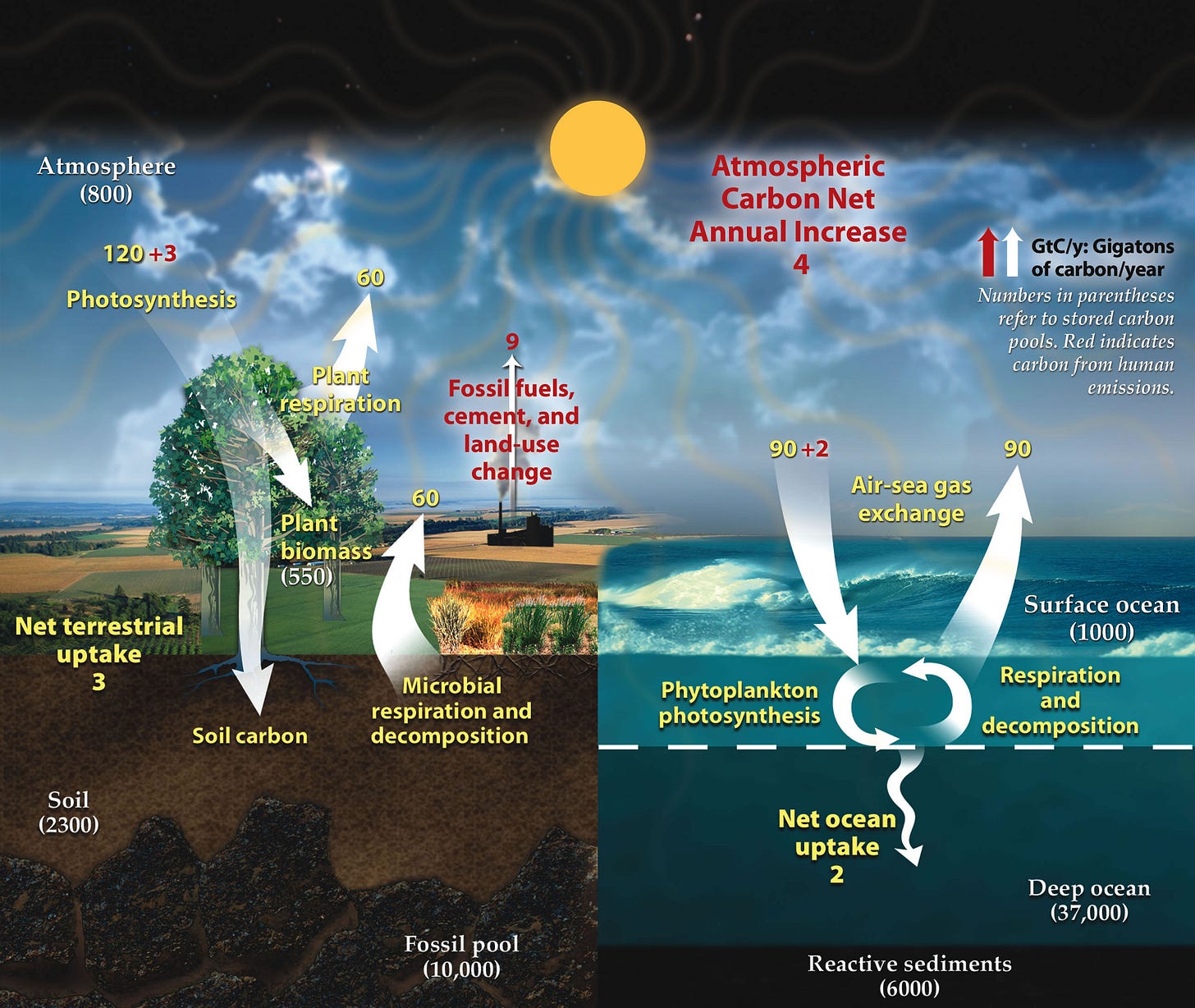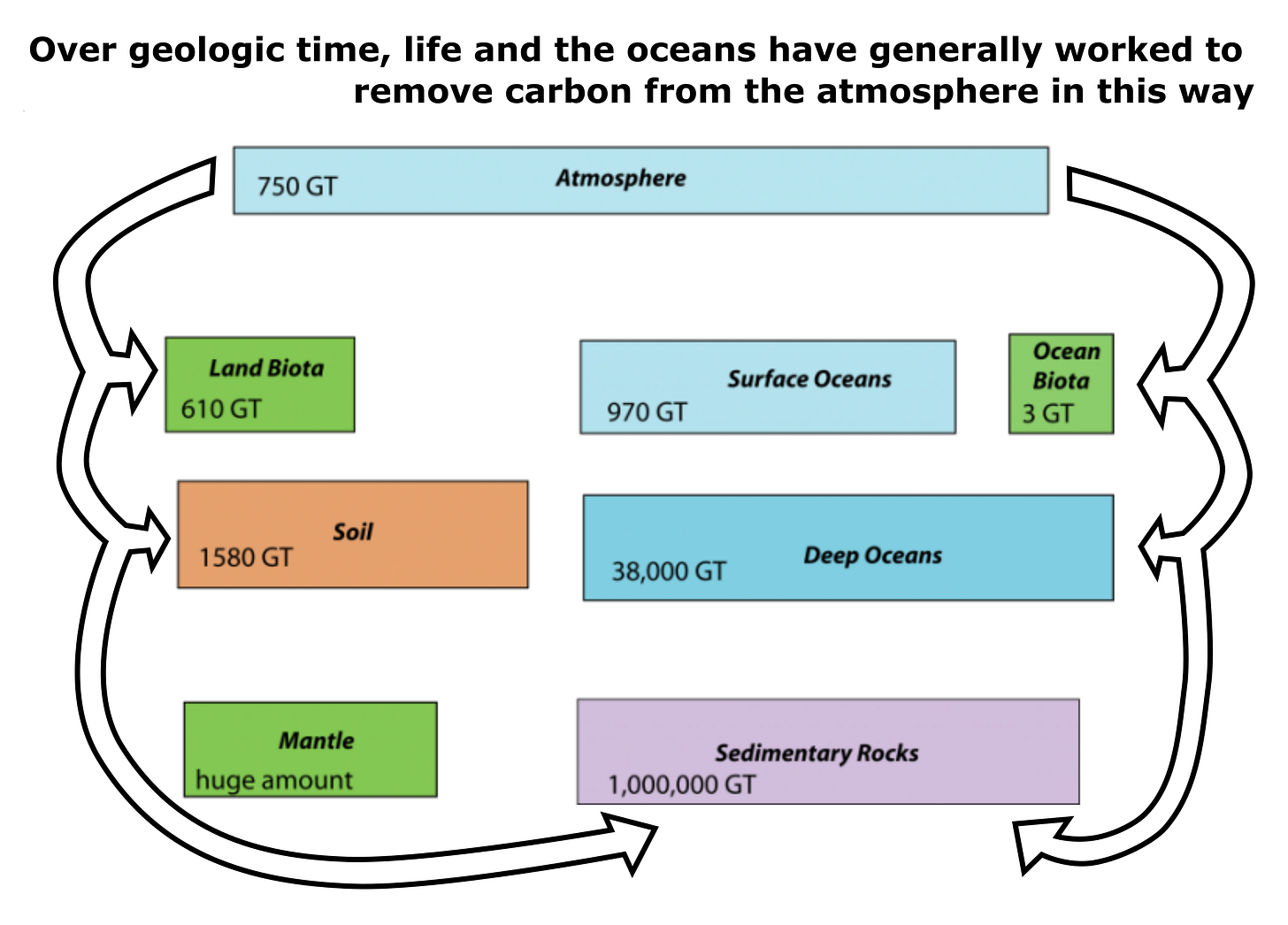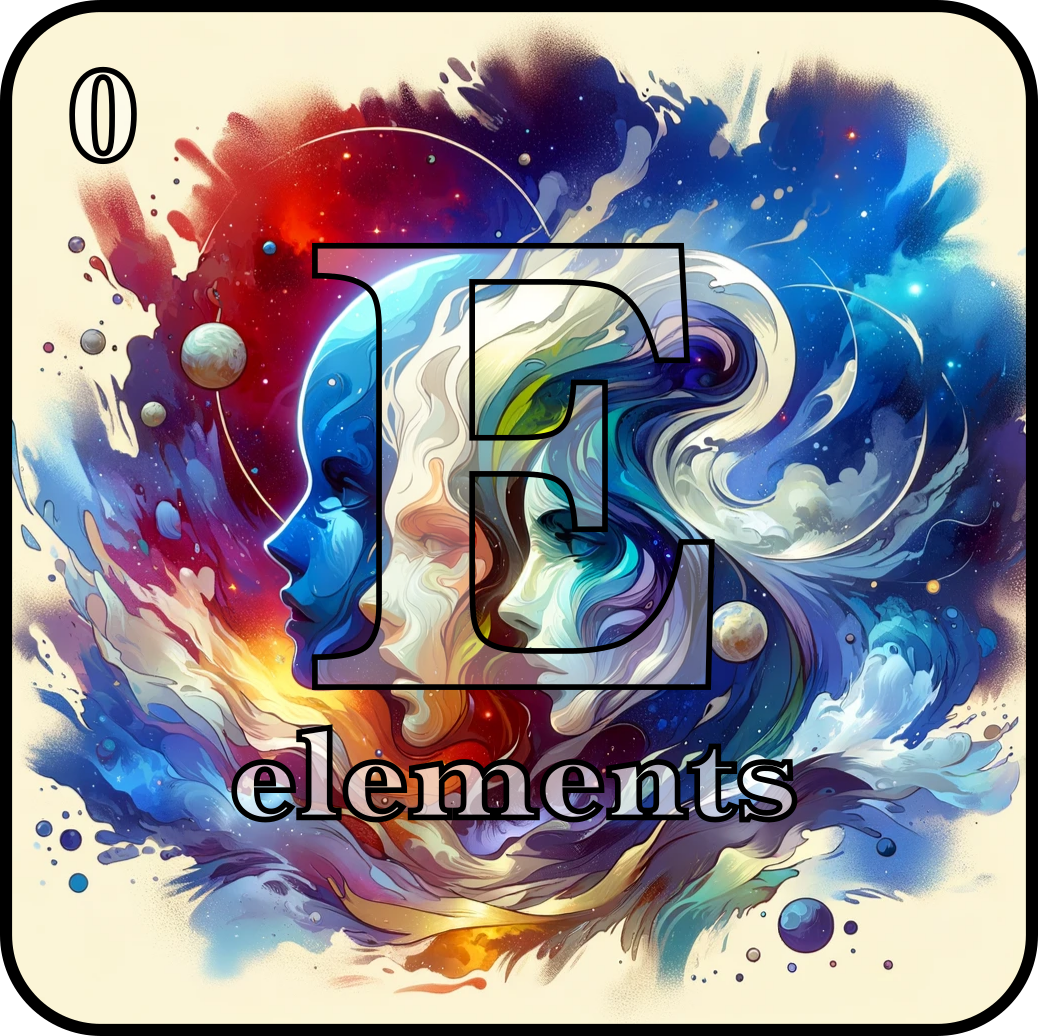What is Elements?
Elements is a fantasy epic that archives the story of our planet told from the perspective of powerful entities inspired by elements from the periodic table. Carbon, iron, hydrogen, sulfur, and many more. The personalities, abilities, and appearances of the entities are rooted in the geochemical behavior and distribution of those elements in the Earth system.
The history of our planet is well known to an extent. My education taught me that the chain of events that lead to the formation of the planet — and ultimately the evolution of human beings themselves — was guided by the behavior particles set in motion by the Big Bang simply following the laws of physics. I believe this to be completely true.
But, what if there was more to it? Bear with me for a moment: most extinction events have an identifiable cause — a glaciation, ocean anoxia, a meteorite impact. But often, that event echoes through the various feedbacks of the climate and earth systems creating a cacophony of different environmental stressors. What if these feedbacks were conversations between parts of the Earth system? What if the instigating event was some kind of aggressor? If the event could be reframed as a war, what forces of nature would be pitted against one another? Who is betrayed? What sacrifices are made? Who comes out on top?
I was blessed enough to have a style of intelligence suitable for a science classroom. But not everyone learns the same way. Storytelling is a universal and ancient form of education. The art of storytelling is driven by elements like romance, conflict, and humor. Most fundamentally, I think it’s driven by the reflection of ourselves we see in the characters we witness. That is why I want to give humanness to the elements.
The “plot” of the history of our planet is already written. I aim to connect the dots by injecting humanity in the key beats of the story. In doing so, I hope to reach the hearts of an audience broader than the science classroom and typical consumers of nonfiction.
What inspired Elements?
I don’t think I will shock anyone if I say that humanity is in the midst of an environmental crisis. However, despite rapidly amassing evidence of the ways that this environmental change will impact our well-being, a large subset of our culture denies there is any danger. My own origin is rooted in this subset. My home state of Louisiana is battered by flooding and deadly storms every single year because of the way that humans have altered the environment on a local and global scale.
I myself was largely in denial of these changes until my geoscience education. I believe what I was missing was context. Sure, CO2 concentrations are increasing, temperature is going up, and sea level is rising, but what does that really mean? Earth’s climate changes all of the time, right?
Geology taught me the natural range of variability in these processes, which is important to understand the scale of the challenge we now face. CO2 does in fact fluctuate by almost 100 ppm with ice age cycles (see graphic below), but atmospheric CO2 concentrations haven’t been as high as they are now for at least 3 million years. At that time, sea level might have been as much as 15 meters (45 feet) higher, which likely represents a complete melting of the Greenland and West Antarctic Ice Sheets. Humans have only been around for 200 thousand years, not even two complete ice age cycles. Society and cities of any kind have only been around for 10 thousand years, since the end of the last ice age. How well adapted are our bodies and our civilization for a world that has been gone for 3 million years?

One of the most important topics I hope to convey through Elements is the mechanisms and levers of the Carbon Cycle. The conceptual model of the Carbon Cycle describes how carbon moves in and out of various parts of the Earth system, including the air, deep and shallow oceans, land plants, rocks, and soil (see graphic below). Despite how profound important carbon is to the problems we presently face as a species, I find most people have basically no knowledge of this cycle. Unlike the water cycle, this wasn’t covered in our primary school science textbooks.

The nature of humans’ problems with carbon from a geological perspective can be stated very simply: The Earth, billions of years ago in its youth, actually used to have an atmosphere with very high concentrations of carbon dioxide, much like modern day Venus. Much like modern day Venus, the early Earth was horribly warm. However, due to the development of a liquid water ocean, various chemical processes, and the action of life itself, almost all of that carbon in the atmosphere found its way into rocks, where it’s essentially locked away forever (see graphic below). Billions of years later, humans found that we could use carbon stored in rocks to make energy, which dramatically changed patterns of the development of our civilization. Most people would say the change brought about by the Industrial Revolution improved the lives of humans. However using carbon as energy had an unintended consequence. We brought a small portion of the enormous reservoir of carbon stored in the solid Earth back into the atmosphere, and it’s warming our climate. Our challenge at the present day is putting this cycle in reverse, and returning carbon back to the rocks and ocean.

I want to imbue this story with life and meaning through the eyes of our protagonist, Carbon (say hello below!). Carbon is the creator and steward of life on Earth. Her actions are always in the interest of developing and protect her creations, even those actions are misguided or have unintended consequences. Of all of her creations through all of Earth’s 4.5 billion years of history, she loves humans the most. However, she fears for us. Observing how profoundly we’ve changed our environment, guided by the regrets and wisdom she’s gained in her long life, she defies the will of the gods to share her story with us, in hopes that we might be able to save ourselves.

Who am I?
I am a PhD earth scientist, trained at Columbia University’s Lamont Doherty Earth Observatory. My background is in geochemistry and paleoceanography. Geochemistry is the practice of using chemical techniques to understand the history of the earth. Paleoceanography is an incredibly complex, interdisciplinary field that aims to reconstruct past earth’s climates using geologic material. For example, my work from my PhD used the chemical properties of sediment from the seafloor deep in the Indian Ocean to understand how carbon burial in the deep ocean is impacted by ice age cycles. The incredible breadth of knowledge required to advance the field, involving ocean, atmospheric, geologic, and life systems, prepared me well to write this for you.
Many of you may know me from my social media presence on Instagram and TikTok. There, I make short, educational, field-based geoscience videos. If you followed a link to my substack from there, thank you so much! Your encouragement there has been so inspirational. If you think I’m passionate about rocks, you have no idea how passionate I am about the combination of rocks and the genre of fantasy. Thank you for embarking with me on the next leg of my creative journey
Elements as a proving ground
I’ve always dreamed of being a fantasy writer. In some of my first memories of kindergarten, I remember waiting anxiously on the school bus for my friend to get on board so we could continue making up a story together. In middle school at the Scholastic Book Fair I was attracted to a book with a blue dragon on it called Eragon. I was obsessed with the story. When I learned that the author published the book at 18 years old, I remember telling my mom that my goal was to do the same.
I didn’t accomplish that goal and instead went down the STEM path towards earth science. And I love my career. But now that my platform on social media has given me a certain amount of credibility as a science communicator, I am starting to dream bigger. What is the ultimate fusion of the skills the I’ve gained in my life so far?
Out of that meditation was born Elements. A true work of science-fiction, with a deliberate emphasis on science. The plot of the book is based on the best science we have available to us. Humanity fills the space between the major plot beats threads the sequence of events into an actual narrative with meaning.
Substack is where this starts. The series here will hopefully one day be wrapped up together as Elements 0, a precursor or alternative set of lenses with which to view a longer, more complete work of fiction. I want to use this space to
Explore the characters and the world of Elements. I want to build them unique personalities and abilities and let them loose to interact with each other
Develop my creative writing chops. I’ve written 2 peer reviewed scientific papers, released an album of original music with my band Hot Grandpa, written hundreds of scripts weekly educational videos, and published a couple articles for the news, but I’ve never put any creative writing out in the world. I have a lot to learn.
Build a creative writing portfolio. Usually people investing in idea — be it the National Science Foundation, venture capital firms, or a publishing house — want to see you’ve had success implementing a similar idea. When that day comes, hopefully I’ll be able to direct them here.
I’m excited to share this journey with you. I’ve been enjoying working on this so much. Hopefully you find the material as entertaining, fulfilling, and educational as I do. If you enjoy reading, I’d love it if you share it with someone else who you think might enjoy it with you. Search your contact list for your dorkiest friend. A rock nerd? Amazing. A fantasy nerd? Yes! Both? PLEASE, THESE ARE MY PEOPLE.
Why subscribe?
I’ve been advised never to give away art for free or to let someone give me art for free. Art has inherent value. Part of my soul is injected into this writing. If I’m to start this journey towards being a creative writer professionally, I ought to start taking this seriously right now.
Substack won’t let me lower the monthly price below $5 for a subscription. However, I am allowed to set my annual price however I like. I’ve settled on $30 a year, which is less than your average one hour yoga class, at least in New York. This comes out to about $2.50 on a per month basis, less than a bag of chips at your neighborhood bodega. With this subscription, you’re promised two vignettes from the fantastical world of Elements per month.
At the moment, I’m not offering benefits for an unpaid subscription because I don’t know what that would entail. However, the teaser is always going to live on the free side of the paywall.
Feedback
I’d love to hear what you think about my writing. Especially from other writers. Let me know what you like and what you don’t. Tell me your favorite characters and ones that don’t make so much sense to you. Give me ideas for powers they ought to have. Name events from Earth history you’d like to see me interpret.
Love y’all
Daniel



